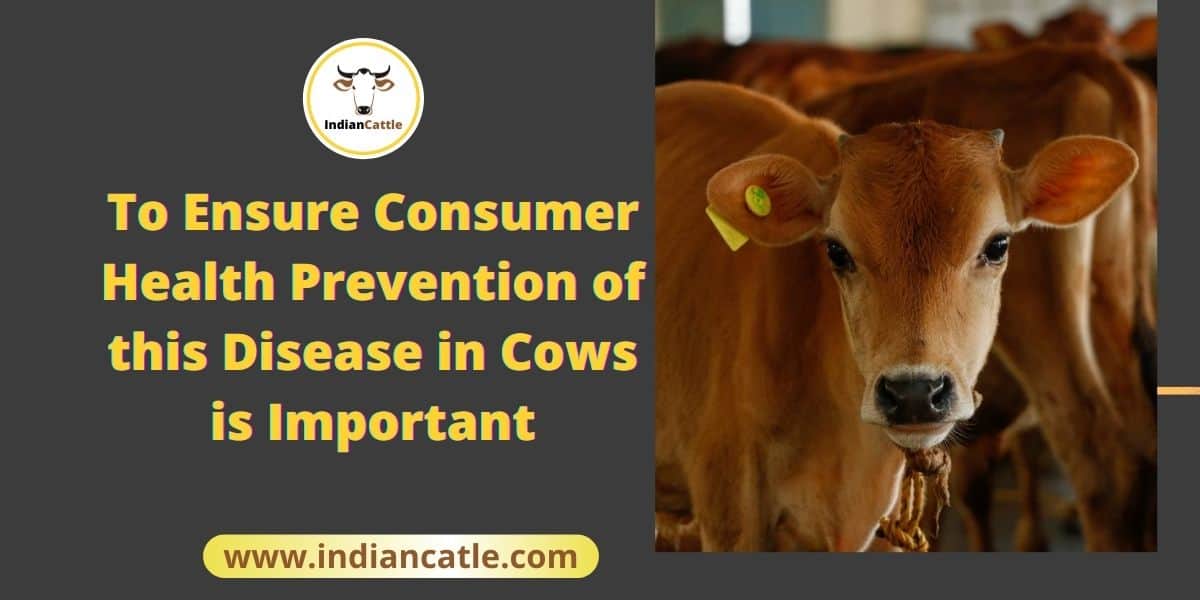
Detection, Diagnosis, Prevention and Control of Bovine Tuberculosis
Bovine tuberculosis is a chronic bacterial disease caused by a bacteria called Mycobacterium bovis. It is acid-fast organism. It is related to Mycobacterium tuberculosis, which causes tuberculosis in humans. The disease can be transmitted from animals to humans as well as to all other animals also. Tuberculosis is a zoonotic important disease-causing severe impact on human life as well as on animal life. The occurrence of this disease is throughout the world. Bovine tuberculosis remains a serious problem for animal and human health of many of the developing countries but in some countries, it is not detected. The course of the disease is slow and takes months or years to reach fetal stage. The zoonotic form is primarily transmitted indirectly, through the consumption of contaminated milk, dairy products and meat containing infected material. The “tuberculosis” word comes from the nodules, called tubercles which form in the lymph nodes and other affected tissues of infected animals. Bovine tuberculosis is an OIE- listed disease.
Etiology: Mycobacterium Bovis
Animals affected: All animals including wild animals and humans.
Mode of transmission and spread: Through inhalation and ingestion. The usual route of infection is by animals and humans inhaling infected droplets which are expelled from the lungs by coughing. It also occurs from direct contact with wound. The organisms are excreted in exhaled air sputum, saliva, faeces, milk, urine, vaginal and uterine discharge, The disease is spread by contact between infected domestic animals, wild animals and humans.
How human get Tuberculosis infection :
- Human get infection by breathing or inhaling air contaminated with tuberculosis organisms from infected animals. Similarly with close contact of infected persons cough or sneeze.
- Consumption of raw or unpasteurized milk and milk products from infected animals or eating undercooked meat of the infected animals.
- Handling of infected meat in processing plants or dressing of animal carcass (Veterinarians and persons working in slaughter house or at processing plants should wear required protective clothes and hand gloves as well as should adopt strict hygienic measures.
- Clinical symptoms: Weakness, Loss of appetite and weight, emaciation, fluctuating temperature, enlarged, prominent lymph nodes. pulmonary involvement is characterized by chronic cough, due to bronchopneumonia. Dyspnoea seen in morning hours or in cold weather or by drinking cold water Tuberculous mastitis and induration of udder seen in some cases.
Symptoms grossly noticed in humans are weakness, weight loss, fever, cough dry as well as wet. fatigue and sometimes sweating etc,
Post Mortem Findings: Tuberculous nodules with caseation and calcification in various organs. Lesions develop most commonly in the lungs, pleura and lymph nodes. Bronchopneumonia is also seen.
Material to be collected for Laboratory Diagnosis:
1) From ailing animals.
- Sputum or nasal discharge in sterile vial.
- Sterile swabs of the above material in a sterile test tube containing 1-2 ml. of normal saline solution on ice.
- Smear of sputum and nasal discharge.
2) From dead animal:
- Impression smears from a portion of affected organs and associated lymph nodes.
- The portion of affected organs and lymph nodes on ice.
- Affected organs and lymph nodes in 10% formalin.
Laboratory Tests:
- Microscopic Examination of smears of sputum, nasal discharge and impression smear from tuberculous nodules, peripheral lymph nodes or associated lymph nodes.
- Another method for the detection of bovine tuberculosis in animals is T. B. skin test.
- Cultural test
- TB interferon gamma release assay
- Serological test
- Molecular test
Diagnosis :
- On basis of Microscopic examination of smear
- Skin test
- Cultural examination
Differential Test in Laboratory: Examination of impression smears of lymph nodes, affected organs and sputum and nasal discharge, stained by Z. N. staining reveal acid fast organisms.
T.B.and J.D. Testing:
- The object is to detect the carriers of T.B.\J.D.
- The material requires is scissor, razor, vernier calliper, tuberculin syringe with needle and TB\JD antigen.
- Generally, middle of the neck is chosen as a site of inoculation. Clip and shave the hairs about 1 sq. inch area in the middle of neck without any cuts and abrasion.
- Pinch up the shaved area in left-hand thumb and index finger with vernier callipers in right hand, measure the thickness of skin. The pressure applied over the jaw of vernier calliper should be gentle.
- The tuberculin syringe filled with the required quantity of antigen is taken into right hand and the needle is inserted into skin nearly parallel to the skin fold at about 20 degree angle. The needle is inserted below the epithelial layer of dermis but above the other layers of skin. Inoculate 0.1 ml. of antigen.
- The increase in the thickness of skin is measured after 72 hours, post inoculation. Retesting in case of doubt is done after 60 days of the previous date of testing. Oedematous and painful swelling with an increase of thickness of skin more than 4 mm at the site of inoculation indicates positive reaction. These positive rectors should be removed.
Treatment: Treatment is not economical as it takes very long period to recover. Removal of positive reactors from the shed is good practice.
Prevention and Control:
- The prevention of Bovine tuberculosis is possible by adopting systematic individual testing of cattle and eliminating positive reactors.
- Post mortem meat inspection
- By adopting strict biosecurity measures and control the movements of man and materials.
- Breeding stock should be regularly tested.
- Regular hands and cloths disinfection of milkers.
- Regular cleaning and disinfection of sheds.
- Pasteurisation of milk.
You may like to read: Flies in the Farm? Your Cows May Have This Disease
| Dr. V. M. Bhuktar
Former I/c Joint Commissioner A. H. Western Regional Disease Diagnostic Laboratory (WRDDL) Pune M.S |
Dr. Harischandra J. Abhyankar
Livestock Development Officer (extension) |
